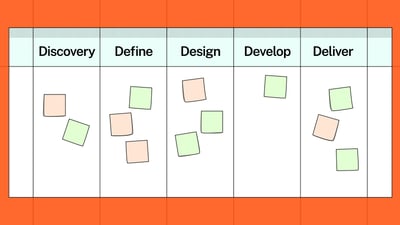How the Right Consultant Can Help You Fix Your Strategic Planning Process

Whether developed annually or every three to five years, a strategic plan involves lots of time and money. Three to six months is the norm for, say, mid-sized nonprofits, while the average price tag in outside fees and inside labor can range well over $200,000.
So what’s the purpose of this costly endeavor?
Well, the standard answer may be that it’s a roadmap for organizational growth. Or, it’s a blueprint for achieving long- and short-term goals.
Regardless of how it’s framed, oftentimes the unfortunate truth is that the strategic plan is more of an obligatory exercise than a usable document. “We’re expected to have one, so we do.”
It’s likely voluminous and ambiguous and rarely referenced until its next makeover.
In short, it’s just not practical for daily operations.
Ironically, even if it was, mission-driven organizations frequently constrain their plan’s impact by basing strategic goals on current performance.
That is to say, this large and costly plan can at best lead them through incremental growth, like five percent year over year for the next three years.
So many resources expended for so little gain!
Instead, why not disrupt typical thinking by adopting a true growth mindset?
Why not ask of your plan: How might we achieve ten times our impact and double our revenue if we only had half of our resources over the next three years?
Now that’s something worthy of your time, effort, and money! (I believe your nonprofit board members would agree.)
Nonetheless, even asking such a question, many nonprofit plans fail or simply aren’t actionable. Why is this? Why don’t they work?
Why is the strategic planning process broken? We’ve identified four good (or bad) reasons, and the right consultant can fix them.
REASON ONE:
IT’S DONE EXCLUSIVELY WITH UNSTRUCTURED MEETINGS
What’s this, you say? Meetings are a reason why many strategic plans fail?
Just so!
Meetings certainly have most of the right ingredients for a successful outcome. Put your hands together for agendas, notetakers, and action items.
However, these meetings generally lack one crucial element: Structure.
Without structure, we talk in circles. We repeat things, especially our own thoughts that we hope also become those of other attendees.
Nothing really gets decided, except to have follow-on meetings. Or worse yet, exploratory task forces are formed through which virtually nothing gets done.
Instead of meetings, why not have a strategic planning workshop? One that features exercises designed to surface and prioritize the most important opportunities that enable growth?
The right consultant (like CauseMic) can facilitate such a workshop, providing vital structure to your strategic planning process and streamlining actionable steps to achieve your goals.
REASON TWO:
NONPROFIT LEADERS ARE MISSING CRUCIAL CONTEXT
Let’s face it—the higher up you go, the further you are from the ground. And yet, that’s where your organization executes.
Strategic planning usually pulls in the heads of various departments like finance, fundraising, marketing, operations, and so on, not to mention members of the board or advisory committees.
Perhaps all are then asked to do a department-focused Strength Weakness Opportunity Threat (SWOT) analysis or identify specific projects that can help advance the organization’s mission.
Operating at 30,000 feet, this management group lacks the insights of ground-level executors, the people that work with clients and handle program logistics and navigate organizational blind spots.
Instead of leaders being siloed, why not require them to gain the context necessary for practical decisions?
As a strategic plan consultant, one of our favorite exercises is for functional leads to ask their team, community partners, and even clients what’s working, what’s not, what’s missing, and what’s confusing.
“Lots of people don’t know we exist.” “More clients would attend, but they can’t afford childcare.” “We could really use a Tagalog interpreter.” “Why should we invest time to collect this data?”
Armed with such knowledge, nonprofit leaders can more readily identify roadblocks and prioritize high-impact, low-cost solutions. Speaking of which…
REASON THREE:
THERE’S NO STANDARD WAY TO CAPTURE IDEAS
Any strategic planning process worth its salt generates lots of great ideas.
It identifies challenges and ways to approach them, and it even establishes directions that leaders wish to go.
However, most teams lack a uniform method of capturing ideas for an action plan that is truly executable.
That’s why we love the “How Might We” exercise. It reframes challenges into opportunities and distills the best ways of approaching them into actionable, strategic plan steps.
With one moderator (perhaps a strategic plan consultant like CauseMic), a few Sharpies, and lots of sticky notes and dots, “How Might We” begins with everyone writing down any and all organizational problems, challenges, or needs.
The moderator then reframes top-voted concerns with the phrase, “How might we.”
For example, let’s say a big problem involves program documentation falling behind due to lack of available staff time.
This may be reframed as, “How might we recruit interns or volunteers to handle necessary paperwork?”
The session continues, ending with the top concerns married to high-impact, low-effort solutions that feature immediately doable steps. And it’s mostly done without too much pesky, roundabout talking!
This type of exercise puts action front and center, a clear departure from our final reason why the strategic planning process is broken.
REASON FOUR:
DOCUMENTATION IS PRIORITIZED OVER ACTION
Years ago, when we were in your shoes, we hired a strategic planning consultant. More than five months later, we received a 43-page document involving a five-year plan.
It was detailed. It satisfied a requirement for various grants. It was chock full of critical areas, challenges, opportunities, and tactical details.
And it defied implementation. We realized then that conciseness is key for achievable goals.
Certainly, brevity quickly communicates a desired end. But rather than bogging them down with instruction, it also empowers those responsible to fill in the blanks on how to get there.
We thought, “Wouldn’t it be great to replace a long-form document with a one-page, actionable strategic plan? A single page that identifies exactly who is doing what, when, and why?”
For any number of reasons, creating a strategic plan can be an exercise in futility.
Conversely, approaching the process with structure, clarity, brevity, and a desire for substantial growth is a good plan for making a great one.
To do that, you may want the help of the right strategic plan consultant. Fortunately, we know a terrific one—CauseMic!
Just contact us for a free scale session, and let’s talk.



